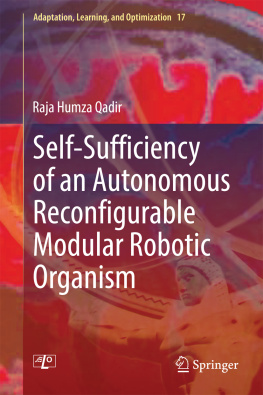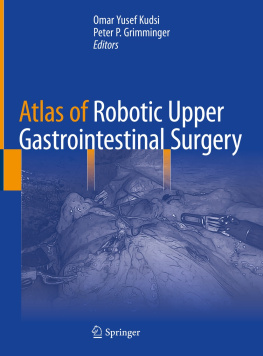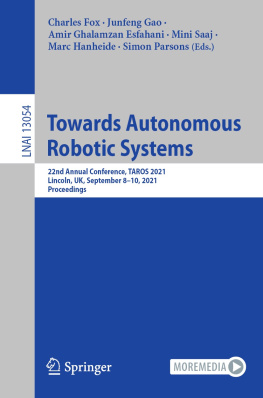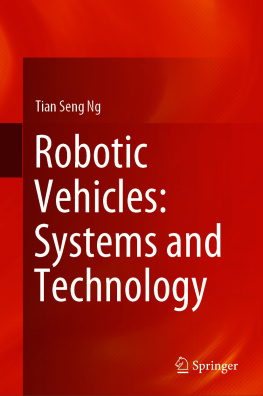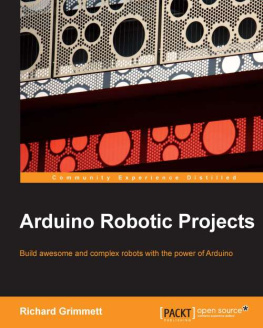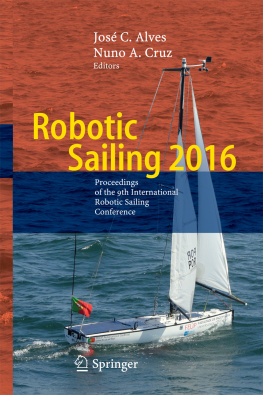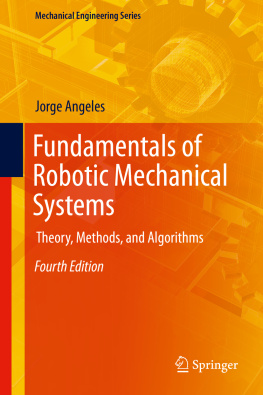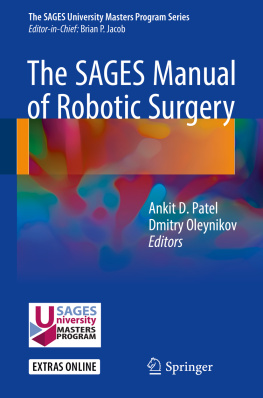1. Introduction
In recent years, several advances have been seen in autonomous systems to mimic different behaviors that emerge from the interactions of a large group of simple individuals with each other and with the environment, termed swarm behavior . The term swarm behavior is assigned to the identical behavior of a large population of a specie that as a whole show complex pattern, flexibility and robustness. It was first used by Beni and Wang (1989), in the context of cellular robotic systems. In particular, it focuses on the collective behavior that evolves from the local interactions of the individuals with each other and with their environment (Dorigo 2009). Examples of such species are, ant and termite colonies, schools of fish, flocks of bird, herd of animals, etc. Some human artifacts also fall in the domain of swarm intelligence, notably multi-robot systems, and certain computer programs, written to tackle optimization and data analysis problems.
Getting inspiration from simple but complex biological organisms, like, slime mold, the robotic research community introduced a new breed of robotic system in the field of swarm robotics, composed of multiple homogeneous and heterogeneous re-configurable robotic modules. A re-configurable robotic module can be defined as an artificial standalone entity having multiple tools, e.g., docking mechanism, camera, locomotive and dexterous drives, sensors, on-board power source, etc., to perform a variety of tasks individually and collectively that may include, self-sufficiency, self-healing, self-adaptability, self-organization, etc. Over the time, modular re-configurable robots that were only able to cooperate and collaborate logically in the swarm, now own the ability to extend their collaboration through physical means, i.e., by physically docking with each other. The term re-configurable is the characteristic feature of such systems to form or adapt different morphologies, which distinguishes them from a traditional robotic system.
Unlike a traditional robotic system, a re-configurable modular robotic organism combines the features and abilities of multiple robotic modules to achieve the objectives that are beyond the capabilities of a single robotic module. For instance, through mutual collaboration, physical and logical, multiple robotic modules may adapt a morphology to overcome different challenges in the environment, e.g., crossing an obstacle higher than the height of a robotic individual, energy harvesting from a power socket or recharge station mounted high in the wall, building a bridge, climbing on a wall, etc. The physical collaboration between the robotic modules in an organism brings multiple degrees of freedom, but also involves multiple challenges or issues to address from their control and management perspective. The collective operations in a modular robotic organism are in fact dependent on the dynamic collaboration between the robotic modules in terms of dynamic resource sharing, e.g., computational power, sensing ability, load distribution, power sharing, etc. This in turn requires the adaptation of several system parameters not only to achieve self-sufficiency but also to sustain their aggregation in the organism. In the autonomy of a modular robotic organism a significantly important factor is its self-sufficiency or energetic autonomy. Up to now, the term self-sufficiency has only been used for single autonomous robots, but not for a modular robotic organism, composed of multiple individual robots. According to McFarland and Boesser (1993), it is the ability of a robotic system to autonomously find fuel and refuel itself from the environment. At an organism level, the complexity of the task multiplies with the number of robotic modules in an organism.
This research work in distributed autonomous systems particularly addresses an important system parameter that plays a critical role in maintaining the autonomy of a modular robotic organism for a longer period of time, namely, self-sufficiency .
1.1 Problem Description
Different principles in artificial autonomous systems have been devised to mimic the behavior of biological systems, observed in nature, for instance, the division of labor, trophallaxis, task sharing, leaving pheromone traces, etc. But, it is still challenging to establish both physical and virtual collaboration between multiple autonomous robotic module of a modular robotic organism. In the past, to keep the energetic autonomy of an autonomous robotic system in a swarm the problem of self-sufficiency has been explored and presented in a variety of scenarios, for instance, harvesting energy using biological means, e.g., sugar (Wilkinson 2000), digesting slugs (Ieropoulos et al. 2005b), and through artificial means, like fuel cells (Kelly et al. 2000), solar panels (Boletis et al. 2006; Landis and Jenkins 1997), recharging from stationary power stations (Munoz et al. 2002), swapping of battery packs (Ngo 2008), etc. But, so far the said principle has not been explored from the perspective of a modular robotic organism.
The self-sufficiency principle in a similar way for a modular robotic organism can be interpreted as the collective ability of autonomous robotic modules in an organism to find fuel and refuel. To accomplish this objective collectively, the robotic modules in a modular robotic organism are therefore must be remained operational till it successfully docks to an available recharge station in the arena. In this regard, to keep the physical collaboration between the robotic modules in a modular robotic organism despite their varying individual energetic status, the hardware design of the robotic modules must support power sharing and fault tolerance to withstand abrupt endogenous and exogenous faults and failures. Studying the platform designs of existing state-of-the-art reconfigurable robotic systems like SuperBot (Salemi et al. 2006) and ATRON (Lund et al. 2005) revealed that their solution although support power sharing but lack certain design features that are considered by the author as vital for dynamic power sharing between the robotic modules of an organism. For example, from the perspective of power sharing, a robotic module must be able to measure and control the current flowing from its battery pack to its on-board system components and to the docked robotic modules. Depending on a systems implementation, the current flow measurements at different components may allow a robotic module to dynamically adapt its behavior during different behavioral states in a modular robotic organism. In addition, the existing state-of-the-art reconfigurable robotic systems platform designs lack fault tolerance at the hardware layer that is essential to keep the physical collaboration of the robotic modules despite faults and failures in a modular robotic organism.
Considering the morphology of a modular robotic organism, in addition, the system design of an autonomous robotic module must bear features that allow it to control its power sharing behavior in conjunction with the docked robotic modules. In other words, the application software components of a robotic module must have an access to the innate system features, embedded in the hardware design, in order to cope different situations in a modular robotic organism, in particular, non-uniform or varying energetic status of the robotic modules and collective behavior of robotic modules in the presence of faults or component failures. So far, no such research work has been seen or conducted that explore the behavior of a modular robotic organism from the perspective of self-sufficiency.

